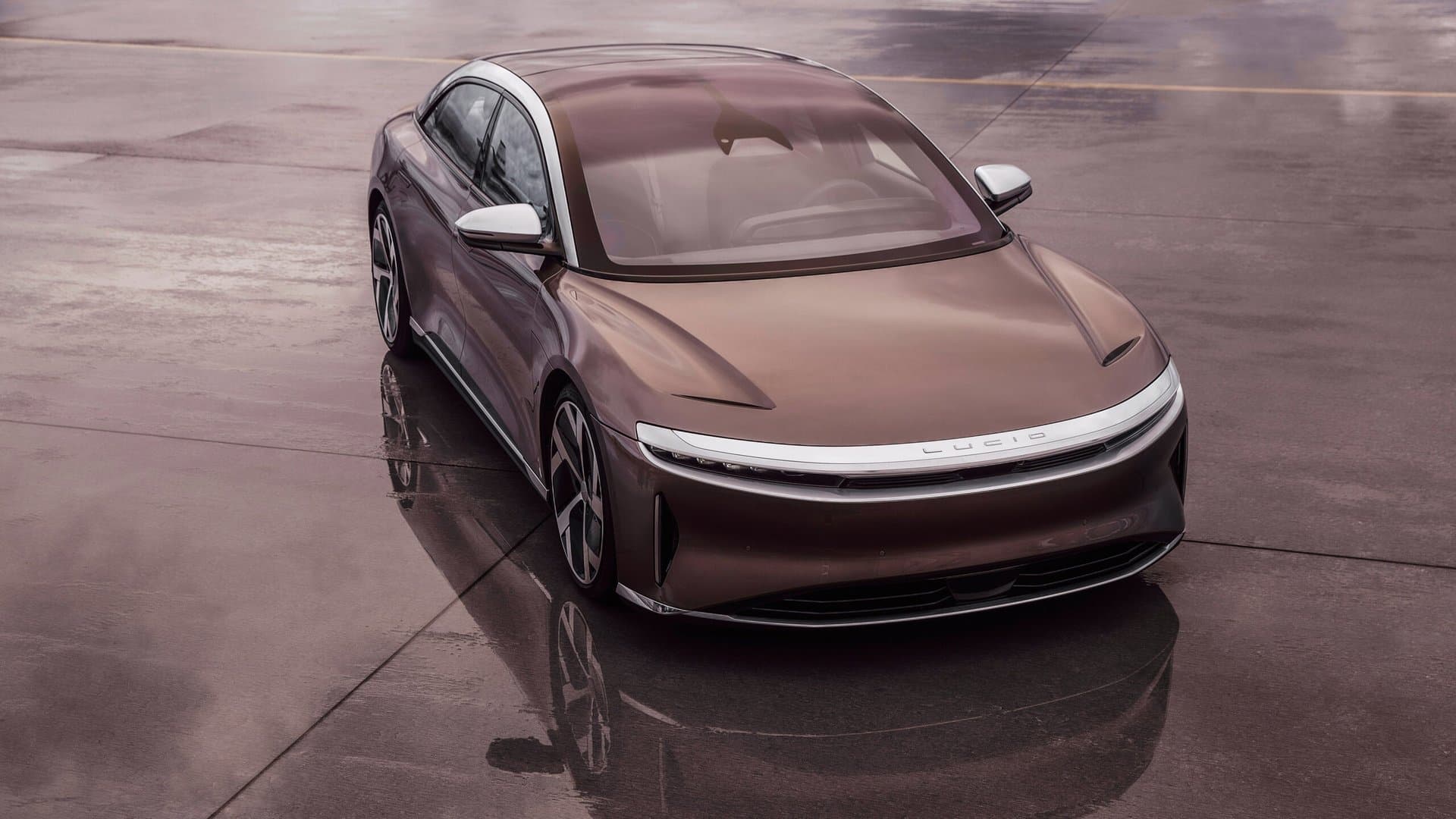Lucid Gravity SUV Challenges: Production, Profitability, and Volume Insights
Explore Lucid’s Gravity SUV production hurdles, profitability struggles, and volume-driven strategy as CEO Marc Winterhoff navigates the luxury EV market’s fierce competition and operational realities.

Key Takeaways
- Lucid’s Gravity SUV production is behind schedule with only 5 US registrations in April 2025
- CEO Winterhoff emphasizes volume as the key to solving profitability issues
- Lucid aims to produce 18,000 to 20,000 vehicles in 2025, trimming earlier targets
- Supply chain issues and loss of federal EV tax credit weigh on Lucid’s ramp-up
- Partnerships with Uber and Tesla Supercharger access aim to boost market presence

Lucid Motors, once a shining star in the electric luxury vehicle arena, finds itself navigating a rocky road with its much-anticipated Gravity SUV. CEO Marc Winterhoff openly admits, “we’re not where we want to be” with the Gravity’s production ramp, underscoring the challenges of scaling a high-end electric SUV in a fiercely competitive market. Despite the Gravity’s impressive specs—up to 450 miles of range and luxury features—the rollout has stumbled, with just 5 US registrations in April 2025 and deliveries stalling by July. Lucid’s strategy hinges on volume to turn the tide on profitability, a classic automotive mantra that Winterhoff leans on heavily. This article unpacks Lucid’s production hurdles, financial pressures, competitive landscape, and the bold moves designed to steer the company toward sustainable growth.
Facing Production Hurdles
The Gravity SUV’s launch has been anything but smooth. Imagine unveiling a luxury electric SUV with fanfare, only to see just 5 units registered in the US in April 2025—a sharp drop from 30 the month before. By July, deliveries flatlined, with zero reported US sales. That’s a tough pill for a company betting big on this model. CEO Marc Winterhoff didn’t sugarcoat it, admitting the company is “not where we want to be” with the ramp-up. Production bottlenecks and safety-related delays have been the culprits, with around 600 unsold Gravity SUVs reportedly sitting idle at Lucid’s Arizona factory. It’s like having a showroom full of shiny cars but no buyers driving them off the lot.
This slow rollout contrasts starkly with rivals like Tesla and Rivian, who posted thousands of sales in the same period. Lucid’s Q2 2025 deliveries across all models hit 3,309 units—a 38% increase year-over-year—but that’s just a fraction of what’s needed to meet ambitious annual targets. The first half of 2025 was marred by supplier issues, including magnet shortages from China, which also affected competitors. Lucid plans to pull forward a second factory shift to boost output, signaling a serious push to overcome these hurdles. Yet, the Gravity’s rocky start underscores how even the most promising EVs can stumble when scaling production.
Navigating Profitability Challenges
Profitability is the elephant in the room for Lucid. The company posted an adjusted EBITDA loss of approximately $161,000 per vehicle produced—a staggering figure compared to Rivian, which has achieved gross profit. Lucid’s Q2 revenue of $259.4 million missed expectations slightly, and adjusted losses per share widened. The math is clear: without ramping up volume, losses will persist. Winterhoff leans on a classic automotive adage: “Volume solves all problems.” It’s a reminder that fixed costs like factory overhead and R&D can only be spread thinly when production scales up.
Lucid’s CFO Taoufiq Boussaid echoes this, highlighting that higher volumes help absorb fixed costs and smooth depreciation curves. Yet, the path to profitability is “complex,” with countermeasures like discounts and financing deals likely deepening losses in the short term. The loss of the federal EV tax credit adds another layer of pressure, potentially softening demand. Still, Lucid remains confident it can meet production and sales goals, betting on a “drastic” ramp-up in the second half of 2025. It’s a high-stakes gamble where volume isn’t just a number—it’s the lifeline to financial health.
Positioning the Gravity SUV
The Gravity SUV aims to carve out a niche at the luxury end of the electric SUV market. With a Dream Edition price tag of $94,900 and Touring versions starting around $79,900, it’s designed to attract buyers seeking range and refinement. The Gravity boasts up to 450 miles of EPA-estimated range, seating for up to seven passengers, and a cavernous cargo space of 120 cubic feet. Inside, a 34-inch curved digital display and high-grade materials signal a tech-forward, premium experience.
Yet, specs alone don’t sell cars. While outlets like Car and Driver praise the Gravity’s ambition and innovation, real-world impact is muted by production delays and limited availability. The configurable two- or three-row layouts cater to families and travelers, but the slow rollout risks losing momentum to established rivals. The Gravity’s luxury credentials are clear, but delivering on that promise consistently and at scale remains the challenge. It’s a classic case of a product that dazzles on paper but needs operational muscle to shine on the road.
Competing in a Crowded Market
Lucid’s Gravity enters a battlefield crowded with heavyweights. Tesla’s Model X, Rivian’s R1S, Audi’s Q8 e-tron, Cadillac’s Lyriq, and Jaguar’s I-Pace all vie for the luxury EV SUV crown. Each competitor brings established brand loyalty and growing sales momentum. Lucid’s edge lies in its exceptional range, upscale appointments, and cutting-edge technology. But in this arena, delays and production hiccups can quickly erode competitive advantage.
The stakes are high. Tesla’s April 2025 sales hit 45,875 units, and Rivian moved nearly 3,000 vehicles, dwarfing Lucid’s numbers. The luxury EV market rewards reliability and availability as much as innovation. Lucid’s transparent communication about challenges is a strength, but the company must accelerate production and delivery to keep pace. The Gravity’s unique features are compelling, but in a segment where buyers expect both luxury and immediacy, execution will determine who leads and who lags.
Strategic Moves and Future Outlook
Lucid isn’t standing still amid these challenges. The company announced a partnership with Uber to supply 20,000 EVs over five years for a robotaxi service, a move that could boost volume and brand visibility. Additionally, Lucid vehicles now have access to Tesla’s Supercharger network, unlocking over 23,000 chargers and easing range anxiety for owners. These strategic partnerships signal Lucid’s intent to expand its ecosystem and appeal.
Meanwhile, Lucid plans a 10-to-1 reverse stock split later in 2025, a financial maneuver aimed at consolidating shares and potentially stabilizing stock price. The company’s liquidity remains strong at $4.86 billion, providing a cushion as it navigates cash burn and operational scaling. CEO Winterhoff’s focus on a “drastic” ramp-up in the second half of 2025 reflects a commitment to overcoming early setbacks. The road ahead is steep, but with clear strategies and transparent leadership, Lucid aims to turn the Gravity SUV’s rocky start into a story of resilience and growth.
Long Story Short
Lucid’s journey with the Gravity SUV is a vivid reminder that innovation alone doesn’t guarantee success—execution and scale matter just as much. The company’s candid acknowledgment of production delays and profitability challenges paints a realistic picture of the luxury EV market’s demands. While volume remains the beacon for turning losses into profits, Lucid must overcome supply chain hiccups, fierce competition, and the loss of federal incentives. Strategic partnerships with Uber and Tesla’s Supercharger network offer promising avenues to expand reach and appeal. For investors and EV enthusiasts alike, Lucid’s story is a lesson in patience, resilience, and the complex dance between ambition and operational reality. The road ahead is steep, but with focused ramp-up efforts and clear-eyed management, Lucid aims to transform its Gravity SUV from a stumbling start into a driving force in electric luxury SUVs.